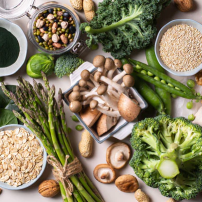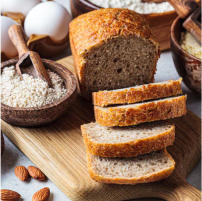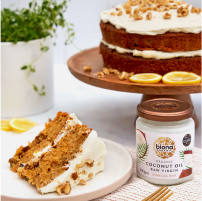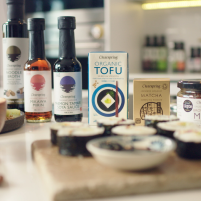Did you know that heart disease is the biggest killer of men and women in Ireland? Many of us are unaware that heart disease shows little symptoms until it’s too late. When was the last time you gave your heart health a second thought?
It’s so common for people to think out of sight, out of mind in relation to their hearts. It only comes to the forefront of our thoughts when something goes wrong and in many cases it’s too late, the damage has already been done. At Evergreen, we believe in a proactive approach to heart health so today we're showing you how best to support a healthy, happy heart plus how to reduce your risk of heart disease.
What is Heart Disease?
Heart disease is the biggest cause of death in Ireland for both men and women. It refers to any condition that affects the cardiovascular system. For the majority of people, however, heart disease can be delayed or even prevented. Simply eating healthy, being physically active and being mindful may all help to reduce your chances of heart disease.
Cholesterol and Heart Health
One of the most beneficial ways to prevent heart disease is to keep your cholesterol at a healthy level. Raised cholesterol increases the risks of heart disease and stroke. Your body requires a certain amount of cholesterol to help your cells function properly and to produce important hormones.
However, if there is too much cholesterol in your blood, it sticks to the inner lining of your arteries and blood vessels to form atheroma (degeneration of the walls of the arteries caused by accumulated fatty deposits).
How to lower cholesterol levels:
Coenzyme Q10
Coenzyme Q10 is an antioxidant that is necessary for the cells to function properly. CoQ10 can be found in its highest amount in the heart, liver, kidneys and pancreas. It helps convert food into energy. Studies show CoQ10 may reduce natural levels of cholesterol in the body.
Phospholipids
Phospholipids such as lecithin help prevent cholesterol from sticking to cell membranes. The lubrication provided by lecithin creates a slippery lining on which it is difficult for large, fatty deposits to stick to. When large deposits of fat cannot cling to specific regions of the body, they are transported to the liver where they are metabolised and converted into energy. Improved circulation is a result of lecithin consumption. This then helps to maintain the health of the liver through which excess fats and energy-providing substances will pass.
Healthy Nuts
Nuts like walnuts, almonds, hazelnuts and pecans can help to improve blood cholesterol. Rich in mono and polyunsaturated fatty acids, these nuts help to keep blood vessels healthy. Eating just a handful (42g) of nuts a day may help to reduce your risk of heart disease. Make sure the nuts aren’t salted or coated with sugar.
Whole Grains
The latest guidelines recommend eating a minimum of three servings of whole grains every day. One serving is equal to one slice of whole grain bread, ½ a cup of whole grain cereal or ½ a cup of brown rice or whole wheat pasta. Also dietary fibre from whole grains when included as part of an overall healthy diet, may help improve blood cholesterol levels and lower the risk of heart disease.
How to Lower Your Risk of Heart Disease
You can reduce your risk of heart disease by simply making smart choices now that will pay off for the rest of your life. Like your car, your heart works best when it runs on clean fuel. You would never mean to put dirty fuel or diesel in a petrol engine, would you?
1. Clean Up Your Diet
One of the fastest ways to clean up your diet is to cut out sugary drinks like fizzy beverages and fruit juice, which lacks the fibre that’s in actual fruit. These calories don't fill us up the way real food can, so we have them in addition to everything else we're eating, with no nutritional benefit.
2. Opt for Healthy Foods
Eat plenty of fibre to aid your heart health; aim for at least 30g a day. Eat fibre from a variety of sources, such as wholemeal bread, bran, oats and wholegrain cereals, potatoes with their skins on, and plenty of fruit and veg.
What does 30g of nuts equal?
- 20 almonds
- 10 Brazil nuts
- 15 cashews
- 4 chestnuts
- 20 hazelnuts
- 15 macadamias
- 15 pecans
- 30 pistachio kernels out of shell
- 9 walnuts
For your heart that means lots of whole, plant-based foods like fruits, vegetables, nuts, and seeds and fewer refined or processed foods like white bread, pasta, crackers, and biscuits.
3. Maintain a Healthy Blood Pressure
To maintain healthy blood pressure, avoid using table salt at meal times and try adding less to your cooking. A healthy salt option is Himalayan salt. It promotes balanced electrolytes to help keep your body in homeostasis - the balance of chemicals that is conducive to the body's function.
The Fresenius Institute in Europe analysed the Himalayan Crystal Salt and proved that it has an amazing array of important trace minerals and elements, including potassium, calcium, and magnesium that help promote a healthy balance by maintaining fluids and replenishing your supply of electrolytes whenever you perspire heavily.
4. Cut Out Processed Foods
Watch out for high salt levels in ready-made foods. Most of the salt we eat is already in the foods we buy. Check the food labels, a food is high in salt if it has more than 1.5g salt (or 0.6g sodium) per 100g. Adults should eat less than 6g of salt a day in total; that's about one teaspoon.
5. Get Active
Getting and staying active may help reduce your risk of developing heart disease. It can also be a great mood booster and stress buster. Changing habits could change your health for instance taking the stairs rather than the lift or escalator, walking to the local shop rather than taking the car, going for a 10-15 minute walk twice daily in the fresh air or cycling to work where possible.
Anaemia and Heart Health
There have been links between anaemia (iron deficiency) and heart health. Research has shown people with heart failure frequently have low iron levels, which can exacerbate their symptoms making exercising difficult.
Anaemia is a blood condition in which the levels of haemoglobin are lower than normal. When someone is anaemic, the body doesn't get the oxygen that it needs. According to the World Health Organization, iron deficiency anaemia is the most common nutritional disorder in the world, with at least 30 percent of the world's population suffering from anaemia.
Haemoglobin
Most iron in our bodies is incorporated in haemoglobin. This essential protein carries oxygen to every living cell within the body. Anaemia is a blood condition in which the levels of haemoglobin are lower than normal.
Dangers of Anaemia
Iron deficiency anaemia may lead to a rapid or irregular heartbeat. Your heart must pump more blood to compensate for the lack of oxygen carried in your blood when you're anaemic. Other symptoms of anaemia include; feeling fatigued, weak, dizzy or irritable, and you may have headaches, low body temperature and very pale skin.
We hope this post on 'How to Reduce Your Risk of Heart Disease' has helped to shed some light on heart health and what changes can be made to improve it.
Please note, this blog is for informational purposes only and should not replace medical advice.
It’s always best to consult your doctor before taking any new supplements, treatments or remedies if you are pregnant, breastfeeding or on medication.
Checked and updated: 9 August 2021













